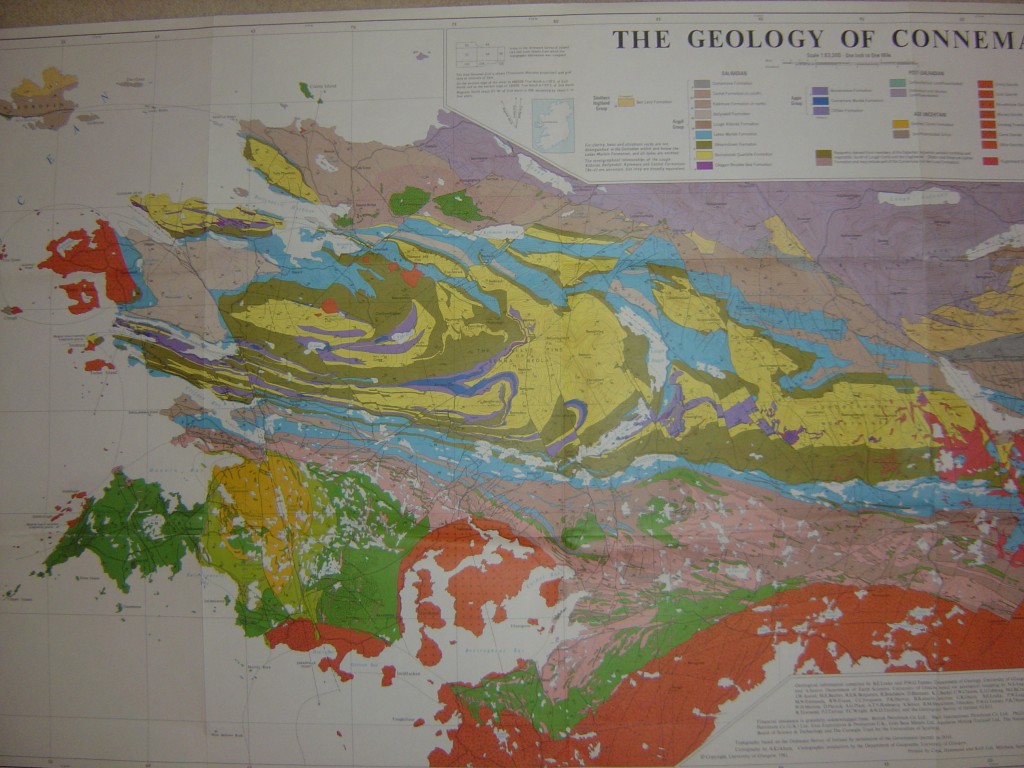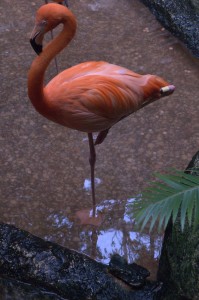This post is part of my journey into the geology of mountains.
When I’m climbing in mountains I like to take my time of it. The summit is not the point; the journey’s the thing. Direct and fast routes the top are not for me. In that spirit I’m getting diverted into a post that doesn’t really help us get the end of our mountainous journey. Think of it as a detour to get a nice view or an added bonus that adds to our enjoyment and wonder at the variety of mountains.
I’m reading a Geological Society of London special publication at the moment. It’s about mountains, naturally, and I’m going to list out all the geological and geophysical techniques mentioned in it. I’ll start with the obvious, but by the end I’ll hope you’ll share my surprise at the sheer range of different types of evidence being gathered.
The obvious: structural geology is an important technique. You can’t get mountains without deforming rocks and the study of structure, from map-scale to microscopic is essential. I’ve written extensively before about metamorphism and this fine subject is indeed extremely useful when studying mountains; the ability to extract P-T-t paths particularly so.
The geophysical – seismic: for modern mountain belts, such as Tibet, the ability to peer into the depths of the earth is very useful. Seismic techniques have a lot to offer here. First there is the pattern of earthquakes themselves. If a body of rock hosts an earthquake then it is most likely being deformed in a brittle fashion. The pattern of earthquakes with depth can then be used to infer the presence of strong, brittle, rigid rocks versus soft, aseismic, viscously deforming rocks.
More direct field-based seismological studies are of great importance in the study of Tibetan geology. If you place close arrays of seismographs and make your own earthquakes (using dynamite) you can get a lot of data, by looking at the way the returning waves are reflected and refracted through the earth’s surface. This might give you a direct image of an important structure (for example the Moho).
Field-based studies tend to give data on the crustal scale. For deeper insights, seismic tomography is used. This looks at natural earthquakes and the patterns traced by seismic waves through the earth. This can be used to build up pictures of very deep, very big structures such as subducted crust in the mantle.
There’s more. With enough data, the speed with which seismic waves move through portions of the earth’s interior can be inferred. In some places this value is different depending on the direction in which the wave was travelling. This anisotropy is interpreted in terms of a preferred orientation of minerals within the rock. We can measure the effect directly in minerals at the surface, which allows us to infer the direction in which the minerals are orientated deep below the ground. Minerals are orientated by ductile deformation so seismic data can let us tell the direction in which rocks are flowing kilometres below the surface.
Other geophysical: the value of gravity at the earth’s surface can be measured and the way this varies sheds light on Geological processes. Measuring gravity over the Himalayas has a fine pedigree, starting with Nineteenth Century observations of how plumb bobs weren’t pulled towards the mountains enough. The extra mass of rocks above the surface is offset by a greater depth of lighter rocks below: the crust is thicker.
Magnetotelluric studies look at electrical and magnetic fields and can be used to infer the presence of melt (or fluid) beneath the surface.
Apply enough maths and a map of altitude can tell you a lot. For instance the pattern of altitude around recent faults can be used to infer how weak the crust is.
Isotopes: isotopes are useful things, no doubt. Firstly they can tell you how old things are. Cleverly, they can date lots of different events. For a single granite intrusion for example you can use U-Pb in magmatic zircon to tell you the age of intrusion and the same in an ‘inherited’ zircon to tell you the age of the crust that melted. A variety of techniques in mica, apatite and other minerals can then tell you the age at which it cooled through a variety of temperatures. If you want to know how fast rocks are reaching the earth’s surface, this is very useful.
The isotopic composition of Helium in hot springs gives a handle on mantle input to magmatic systems. Cosmogenic nucleides can show how long a rock surface has been, umm, on the surface. Stable isotopes of carbon and oxygen can be used to infer past altitudes.
Indirect: When mountains are eroded, lots of evidence is removed. Not lost though, it is stored in rivers, and river and ocean sediments. Look at the contents of the sediment, in particular heavy mineral contents and the age of zircons and you can tell what was being eroded through time.
Sometimes when intrusions arrive at the surface they contain little pieces of unmelted rock. These xenoliths can give a record of the types of rocks found beneath the surface.
Very indirect: finally the one that makes me smile. Plants. Detailed studies of leaf morphology can be linked to the climatic conditions under which they grew. Apply this to fossil leaves on the Tibetan plateau and you can infer the altitude at which the plants grew. This gives a record of the height of the plateau over time, which is something of great interest.
Phew! The best thing about Geology is the variety. Getting up to speed with contemporary work I’ve been most impressed with the increasingly cross-disciplinary nature of the Earth Sciences. I’ve not even mentioned the variety of numerical modelling techniques that are used, for example. It seems geophysicists and field geologists are working together at last, a pleasant change from the situation I remember in the 1990s.
So, have I missed any? If you know of a technique for studying the geology of mountains that I’ve missed, let me know.



